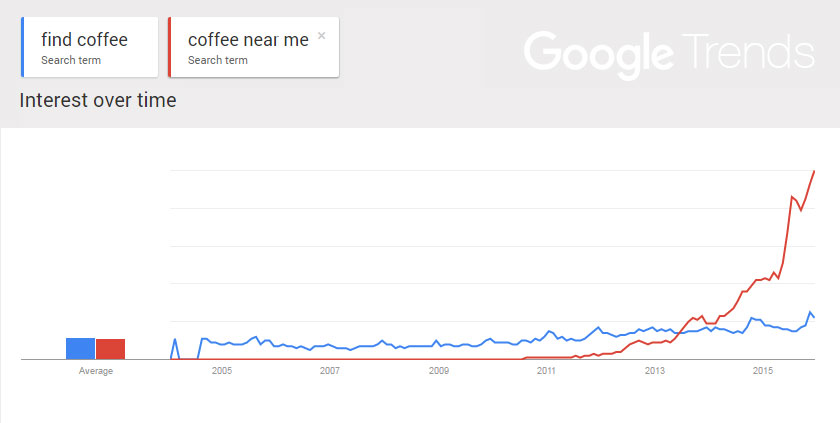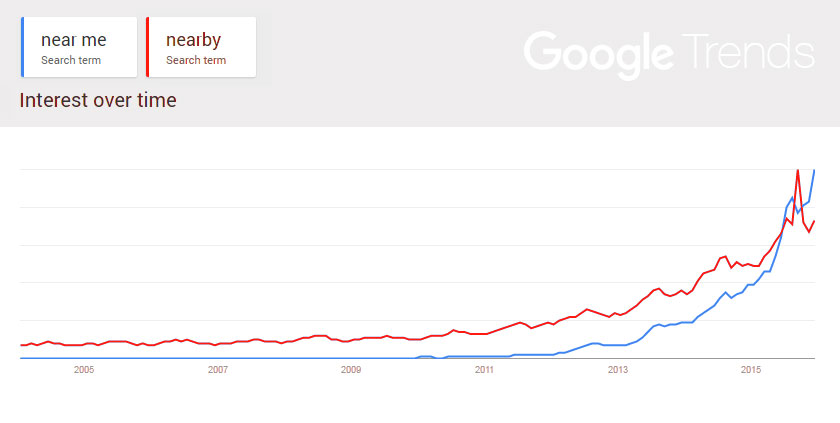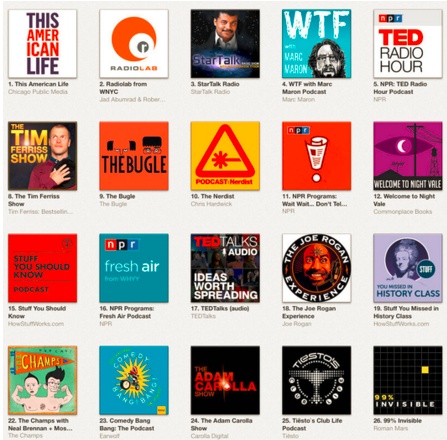When we examine “The Year in Search,” we saw Google crack down on non-mobile-friendly sites, lean harder on social signals for ranking and reward sites that produce high-quality content. Content marketing strategies grew even more dependant on calculating and interpreting user search intent than on utilizing keywords for SEO.
Looking back
Before I discuss my 2016 search predictions, let’s take a look back and see how I fared with my 2015 predictions.
Prediction 1
Google will officially acknowledge that Twitter and Facebook shares are ranking factors.
Outcome: True
As of February 2015, Google announced a partnership with Twitter and is now indexing Tweets. Facebook has yet to be officially confirmed as a ranking factor, though many studies continue to show a positive correlation with Facebook shares and a page’s rank.
Prediction 2
Google will increase the negative impact for not having a mobile-friendly site.
Outcome: True
On April 21, Google rolled out a mobile-friendly update that boosts mobile search rankings for pages that perform properly on all devices.
Prediction 3
There will be a greater emphasis on quality over quantity.
Outcome: True
In May, Google rolled out a silent update, dubbed the “Quality Update,” and recently SearchMetrics spotted a potential second phantom update that focused on “user intent.”
Prediction 4
Google will remove 100 percent of all keyword data from Analytics.
Outcome: False
I was wrong. However, Google did restrict access of its Autocomplete API, forcing developers to use Google Custom Search instead.
Prediction 5
Google will announce that Matt Cutts is gone for good.
Outcome: Unresolved
He’s still on unpaid leave.
Prediction 6
Google will kill Google+.
Outcome: Partially true
In July, Google stopped requiring a Google+ account to sign up for YouTube and other products.
Prediction 7
Google will encourage digital marketers to take full advantage of all the benefits that Universal Analytics has to offer.
Outcome: N/A
No official announcement was made, but the benefits of using Universal Analytics should be clear by now. It’s not just hype: It helps marketers get better insights on e-commerce performance and cross-device tracking.
Prediction 8
There will be a new Google Penguin update.
Outcome: Almost true
Google had announced that a Penguin update was coming during SMX East, but recently said that it would be pushed to 2016.
Not so bad overall. We’ve seen a shift toward an even more mobile web, higher standards for content quality, the factoring of social media influence into ranking, and user search intent. 2016 will likely see even more drastic changes to the search environment.
Now let’s take a look at my predictions for 2016
Prediction 1
We’ll see an update that helps the mobile search experience.
Marketers need to make sure they are optimized for local “in the moment” searches. Google search trends clearly show adoption rates of localized searches.
The graph below illustrates how the “in-the-moment” location-based coffee near me search has been increasing drastically, while the more general, non-location-specific or time-sensitive find coffee has leveled off since the mid-2000s.

The chart below shows the increase in popularity of relative, local, time- and geo-sensitive search terms, which began its climb primarily in 2013.

Prediction 2
Less “click-bait” content ranking well on search results.
Marketers have started to produce “shock value” content in hopes of getting better click-through rates through content discovery networks like Taboola and Outbrain. These slideshow-style articles often force users to click multiple times on a page to view all of the content and are built to maximize the number of ads a user sees. In general, these types of articles do not keep the user’s intent as the first priority, which leads me to my next prediction…
Prediction 3
User intent becomes king.
Content quality is very important, and making sure you’re keeping your users’ intent is in mind will help your content show up in search for the right queries.
This sounds tricky, but let me show you what I mean:
Pretend you run a fashion blog that targets men. The search query “tie and shirt combinations” is valuable to your blog and you desperately want to rank No. 1 for it. Your page on tie and shirt combinations is very detailed; you give a brief background on the history of ties, you list all the types of shirts designed for ties, and you provide several suggestions of shirt-tie combinations toward the end of the page. Your competitor has a much shorter post but is ranking No. 1 for that query. Why? Their content addresses the user’s question right off the bat by just showing shirt and tie combinations. The user’s intent was to get ideas on what to wear – it was not to learn about ties and shirts.
Prediction 4
Podcasts will become a popular avenue for brands to build thought leadership. (Not a marketing trend prediction but I believe this search trend will continue.)
It may sound odd, but hear me out…
- In 2015, we saw an uptick in the number of Americans searching for the term “podcasts.”
- Car manufacturers continuously make it easier to sync smartphones into on-board entertain

Top podcasts on iTunes (photo from cnet.com) ment systems.
- Streaming data is cheaper and easier than ever before so consumers don’t mind streaming audio podcast content.
- The barriers to entry for making a quality podcast are lowering significantly. The main thing stopping brands from creating podcasts is lack of creativity and time. With about 46 million Americans listening to podcasts, it’s time that brands took a closer look at this form of c
 ontent. If brands are able to create unbiased, educational podcasts, they will be able to capture audiences for long periods of time and build consumer confidence. Not all brands will be able to do this properly and I’m sure we’ll see many failures, but the types of brands that have the biggest potential to capitalize are:
ontent. If brands are able to create unbiased, educational podcasts, they will be able to capture audiences for long periods of time and build consumer confidence. Not all brands will be able to do this properly and I’m sure we’ll see many failures, but the types of brands that have the biggest potential to capitalize are:
- Media – topics might include: recaps on top events, stories, interviews
- Venture capital – topics might include: best practices in business
- Sports apparel or sports supplement companies – topics might include: interviews with sponsored athletes
- Health food companies – topics might include: healthy living, cooking, equipment
Overall, I believe that we’ll see a shift toward creating content that addresses user’s intent – not just their specific search terms. Good quality content that addresses the user’s intended question directly, clearly and quickly will perform better than content that provides an answer buried in context and extra material not directly related to the search intent. In 2015, mobile search overtook desktop search for the first time ever – additional emphasis will be put on mobile content, which includes mobile-optimized UX and local, in-the-moment information. Check back in with me in 365 days and we’ll see how I did this year.
Assessing your 2015 content campaigns and looking to tweak your strategies for 2016? Take a look at our list of the 35 ways social media marketing improved in 2015 & how to make the most of it in 2016 blog here.




